서버 랙 배터리는 무엇입니까??
현대 에너지 저장을 조사한 경우, 특히 태양열 또는 백업 전원의 경우, "서버 랙 배터리라는 용어를 발견했을 것입니다." 정확히 무엇입니까?, 그리고 왜 그들이 신뢰할 수 있고 확장 가능한 에너지 시스템을 구축하기위한 전문적인 표준이 되었습니까??
서버 랙 배터리는 고성능 리튬 배터리입니다, 일반적으로 안전하고 오래 지속되는 48V LFP를 사용합니다 (리튬 철 포스페이트) 화학, 표준화 된 19 인치 와이드 형식으로 내장되었습니다. 이 설계는 배터리 모듈을 깔끔하고 안전하게 설치할 수 있습니다. ("랙") 서버 캐비닛으로. 그것들은 공간 효율적인 모듈 식 빌딩 블록입니다, 조직, 쉽게 확장 가능한 배터리 에너지 저장 시스템 (베스).
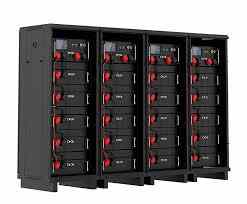
Gycx Solar에서, 우리의 48v 랙 마운트 배터리 솔루션은 우리가 디자인하는 고급 에너지 시스템의 핵심입니다.. 그들은 한국의 고객에게 강력한, 유연한, 그리고 그들의 에너지 독립성을위한 미래 방지 토대. 이 배터리로 시스템 구축에 대한 가장 일반적인 질문에 답해 보겠습니다..
연결 방법 4 48V를 얻는 배터리?
과거에 48V 배터리 뱅크를 건설하는 일반적인 방법은 더 작은 사용이었습니다., 더 일반적인 배터리. 이 작업은 어떻게 끝났습니까?, 최신 48V 랙 배터리 모듈 사용과 비교하는 방법?
4 개의 개별 배터리에서 48V 시스템을 생성합니다, 4 개를 사용해야합니다 동일한 12V 배터리 전기적으로 연결하십시오 시리즈로. 이것은 체인으로 배선하는 것을 의미합니다: 긍정적 인 (+) 첫 번째 배터리의 터미널이 음수에 연결됩니다 (-) 두 번째, 긍정적 인 (+) 두 번째는 음성에 연결됩니다 (-) 세 번째, 등. 나머지 오픈 터미널의 총 전압은 48V입니다..
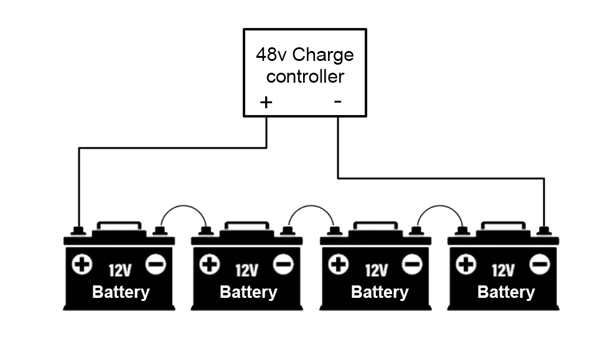
더 깊이 다이빙하십시오: 시리즈 배선 및 최신 솔루션
시리즈로 배터리를 연결하려면 세부 사항에주의를 기울여야합니다:
- "동일" 규칙: 이것은 가장 중요한 부분입니다. 직렬로 연결할 때, 4 개의 12V 배터리 동일해야합니다 화학에서 (예를 들어, 모든 LFP 또는 모든 AGM), 앰프 시간 (아) 용량, 상표, 그리고, 이상적으로, 나이 및 제조 배치. 불일치 배터리를 사용하면 심각한 불균형이 발생합니다, 성능 저하로 이어집니다, 배터리가 약한 조기 실패, 잠재적 안전 위험.
- 배선 경로: 전류가 모든 배터리를 통해 흐르는 단일 경로를 만듭니다.. 최종 48V 출력은 체인의 첫 번째 배터리의 메인 포지티브 터미널과 마지막 배터리의 기본 네거티브 터미널에서 가져옵니다..
- 현대의 이점: 이것은 현대인 곳입니다 48v 랙 마운트 배터리 모듈은 그 값을 보여줍니다. 우리 모듈 중 하나는입니다 이미 사전 엔지니어링 된 48V 장치.
- 간단: 복잡한 시리즈 배선 또는 불일치 셀에 대해 걱정할 필요가 없습니다..
- 안전: 각 48V 모듈에는 자체 고급 배터리 관리 시스템이 포함되어 있습니다. (비엠에스) 그것은 모든 내부 셀의 균형을 완벽하게 균형을 유지합니다, 12V 배터리의 DIY 시리즈 문자열에서 훨씬 더 어려운 작업.
- 확장성: 에너지 용량을 높이기 위해, 다른 48V 모듈을 병렬로 추가합니다, 훨씬 더 안전하고 간단한 연결입니다.
당신은 ~할 수 있다 4 개의 12V 배터리에서 48V 은행을 만드십시오, 목적으로 만들어진 48V 모듈을 사용하는 것이 더 안전합니다, 더 간단합니다, 그리고보다 전문적인 접근.
얼마나 오래 a 48 전압 100Ah 배터리가 지속됩니다?
48V 100AH 배터리는 주거용 태양 저장에 매우 인기있는 크기입니다.. 상당한 양의 에너지입니다, 그러나 실제로 집에 얼마나 오래 전동을 할 수 있습니까?? 답은 전적으로 전기 소비에 달려 있습니다.
ㅏ 48v 100AH 배터리 백화점 4,800 와트시 (와트시) 또는 4.8 킬로와트시 (kWh) 에너지의. 이 총 에너지를 전기 부하로 나누어 얼마나 오래 지속되는지는 계산됩니다. (와트에서). 예를 들어, 연속적인 힘을 발휘할 수 있습니다 480-와트로드 10 시간, 또는 라이터 200-와트로드 24 시간.
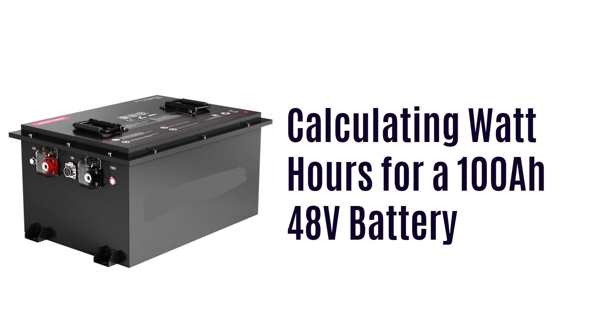
더 깊이 다이빙하십시오: 런타임 계산
간단한 수학을 살펴 보겠습니다:
단계 1: 와트 시간에서 총 에너지를 찾으십시오 (와트시)
- 공식:
Energy (Wh) = Voltage (V) x Capacity (Ah) - 계산:
48V x 100Ah = 4,800 Wh(또는 4.8 kWh)
단계 2: 부하에 따라 런타임을 계산하십시오
- 공식:
Runtime (Hours) = Total Energy (Wh) / Load (Watts)
한국 가정의 시나리오:
- 필수 부하 (대략. 300여): 중단 중에 가정 해 봅시다, 고효율 냉장고를 운영하고 있습니다, 일부 LED 조명, 인터넷 라우터, 그리고 전화를 충전합니다.
4,800 Wh / 300 W = 16 hours
- 적당한 하중 (대략. 800여): 필수품에 TV와 데스크탑 컴퓨터를 추가합니다..
4,800 Wh / 800 W = 6 hours
- 무거운 짐 (대략. 2,000여): 휴대용 에어컨 또는 고출력 기기를 운영하기로 결정했습니다..
4,800 Wh / 2,000 W = 2.4 hours
이것이 우리의 GYCX 태양열입니다 48v 랙 마운트 배터리 시스템은 모듈 식입니다. 100AH (4.8kWh) 모듈은 좋은 출발점입니다, 그러나 더 긴 런타임이 필요한 경우, 용량을 두 배나 세 배로 늘리기 위해 두 번째 또는 세 번째 모듈을 쉽게 추가 할 수 있습니다..
48V 배터리에 필요한 태양 전지판 수?
당신은 당신이 있습니다 48v 배터리 체계; 이제 태양 광으로 충전해야합니다. 배터리가 매일 효과적으로 충전되도록 태양열 어레이 크기?
필요한 태양 전지판의 수는 배터리 용량에 따라 다릅니다., 위치의 기후, 그리고 패널의 와트. 안정적으로 재충전하기 위해 a 48100AH에서 (4.8 kWh) 배터리 한국과 같은 기후에서 매일, 독특한 계절로, 일반적으로 태양열 배열이 필요합니다 약 1.5 kw to 2.5 kW. 이것은 약으로 번역됩니다 4 에게 6 현대의, 고효율 400W 태양 전지판.
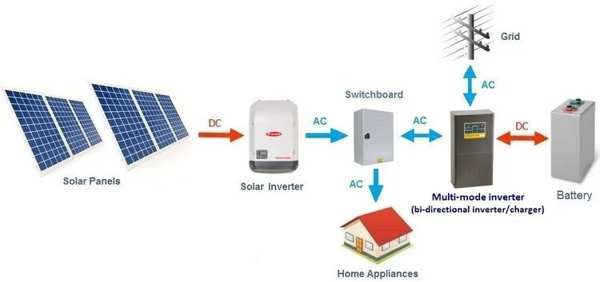
더 깊이 다이빙하십시오: 4 시즌 기후의 크기
GYCX Solar에서 태양열 어레이 크기에 접근하는 방법은 다음과 같습니다.:
- 보충하는 에너지: 우리는 매일 사용하는 에너지를 되 돌려야합니다.. a 4.8 KWH 배터리 사용 90% 용량의, 그게 다야 4.3 kWh.
- 피크 일요일 시간 (PSH): 이것이 주요 변수입니다. 한국에서, 이것은 계절에 따라 바뀝니다. 당신은 얻을 수 있습니다 4.5-5 여름에 PSH, 그러나만 2.5-3 겨울에 PSH. 우리는 종종 1 년 내내 평균 또는 봄/가을 가치를 기준으로 배열의 크기입니다. (예를 들어, 3.5 - 4 PSH) 일년 내내 적절한 충전을 보장합니다.
- 시스템 손실: 우리는 패널 열에서 손실 된 에너지를 설명합니다, 배선, 인버터/충전 컨트롤러 효율성 (일반적으로 a 15-25% 손실 계수).
- 계산:
- 필요한 태양 광 발전 (kW) = 일일 에너지가 필요합니다 (kWh) / (피크 일요일 시간 X 효율 계수)
- 예 (보수적 인 3.5 PSH):
4.3 kWh / (3.5 hours x 0.80 efficiency) = 1.54 kW (1540 Watts) - 이것은 의미합니다
1540W / 400W per panel ≈ 4 panels. 안전하고 완벽한 날에도 좋은 충전을 보장하려면, 우리는 추천 할 수 있습니다 5 또는 6 패널.
GYCX 태양 이야기: "서울의 고객은 48V 배터리 시스템에 대한 겨울 충전에 대해 우려했습니다.. 우리는 낮은 겨울 태양-시간 데이터를 기반으로 배열을 설계했습니다., 맑은 겨울 날에도, 그들의 배터리는 의미있는 충전을받습니다. 이런 종류의 기후 별 계획이며, 1 년 내내 시스템을 신뢰할 수 있습니다."
48V 시스템에서 12V 태양 전지판을 사용할 수 있습니까??
일부 표준 12V 태양 전지판에 액세스 할 수 있으며 새로 충전하는 데 사용하고 싶을 수도 있습니다., 보다 효율적인 48V 배터리 뱅크. 이것이 가능합니다, 아니면 호환되지 않습니다?
예, 48V 시스템에서 12V 태양 전지판을 사용할 수 있습니다., 그러나 올바른 구성만으로. 너 12V 패널을 직렬로 연결해야합니다 결합 된 전압을 48V 배터리를 충전하기에 충분히 높은 수준으로 늘리려면. 추가적으로, 너 고품질 MPPT를 사용해야합니다 (최대 전력점 추적) 태양 전하 컨트롤러, 패널과 배터리의 전압 차이를 효율적으로 관리 할 수 있습니다..
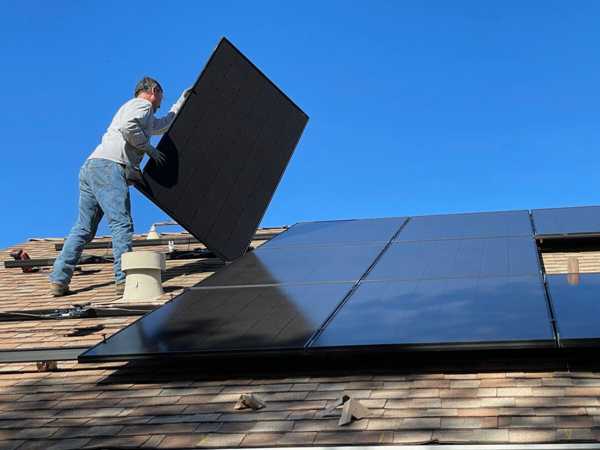
더 깊이 다이빙하십시오: 호환성의 열쇠
이 작업을 수행하는 데 필요한 사항은 다음과 같습니다:
- 패널의 시리즈 연결: 48V 배터리를 충전합니다, 태양열 어레이는 상당히 높은 전압을 생성해야합니다. (일반적으로 60V 이상). 단일 "12V" 패널에는 일반적으로 최대 전력 전압이 있습니다 (VMP) 약 18V.
- 그러므로, 최소한 연결해야합니다 시리즈로 된 4 개의 동일한 12V 패널 (긍정적으로 부정적인) 적합한 시스템 전압을 달성합니다 (4 패널 x ~ 18VMP = ~ 72V).
- MPPT 충전 컨트롤러가 필수적입니다:
- 저렴한 PWM (펄스 폭 변조) 컨트롤러를 사용할 수 없습니다. 패널 전압이 배터리 전압에 매우 가깝습니다..
- an MPPT 컨트롤러 정교한 DC-DC 컨버터입니다. 시리즈 유선 패널에서 고전압을 가져갈 수 있습니다. (예를 들어, 72V) 그리고 효율적으로 "단계적으로 내려갑니다" 48V 배터리의 올바른 충전 전압으로, 프로세스에서 패널에서 최대 전력을 캡처.
- 전문적인 접근: 12V 패널을 사용하는 것은 기술적으로 가능합니다, 48V 배터리의 최신 시스템 설계는 일반적으로 처음부터 고전압 패널을 사용합니다. (예를 들어, "24V" 30-40V의 VMP를 가진 패널 또는 표준 60/72 셀 주거 패널). 직렬로 두 가지만 배선하면 더 간단하고 종종 더 효율적입니다..
이것은 시스템 설계의 중요성을 강조합니다. Gycx Solar에서, 우리는 모든 구성 요소를 보장합니다, 태양 전지판에서 충전 컨트롤러 및 48v 랙 마운트 배터리, 최적의 안전을 위해 완벽하게 일치합니다, 성능, 그리고 효율성.
서버 랙 배터리는 현대의 초석입니다, 확장 가능한 에너지 저장. 구성 방법을 이해합니다, 요금, 주위의 시스템 크기 48v 표준1 이점을 잠금 해제하는 데 핵심입니다. 목적으로 지어진 48V 모듈을 사용하여, 설치를 단순화하고 안전을 향상시킵니다, 당신을위한 강력한 기초를 만드는 것 에너지 독립2.
자신의 48V 에너지 시스템 설계에 대해 궁금한 점이 있거나 전문 랙 마운트 배터리 솔루션에 대해 자세히 알아 보려면, GYCX Solar의 전문가 팀이 도움을 줄 준비가되었습니다.. 상담을 위해 문의하십시오!
